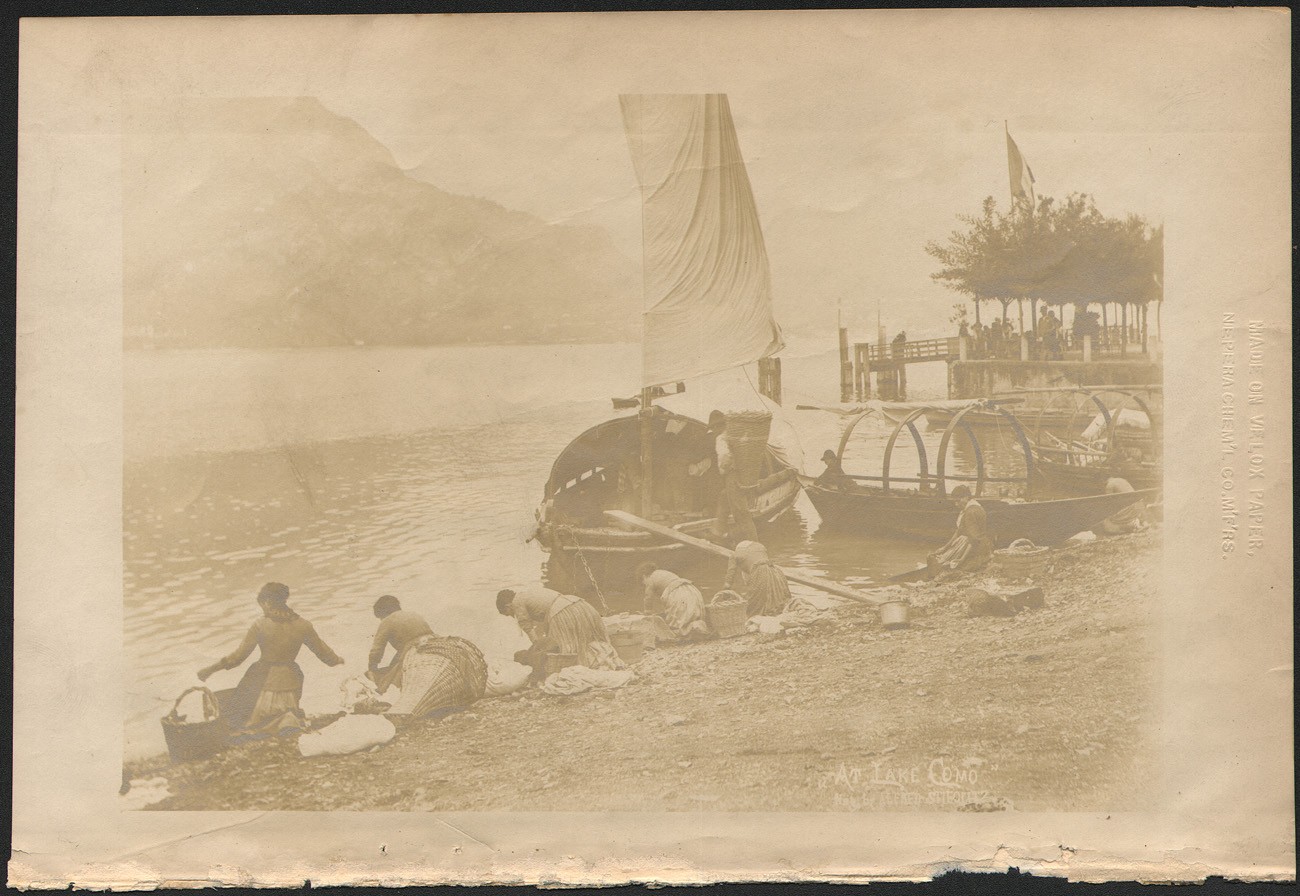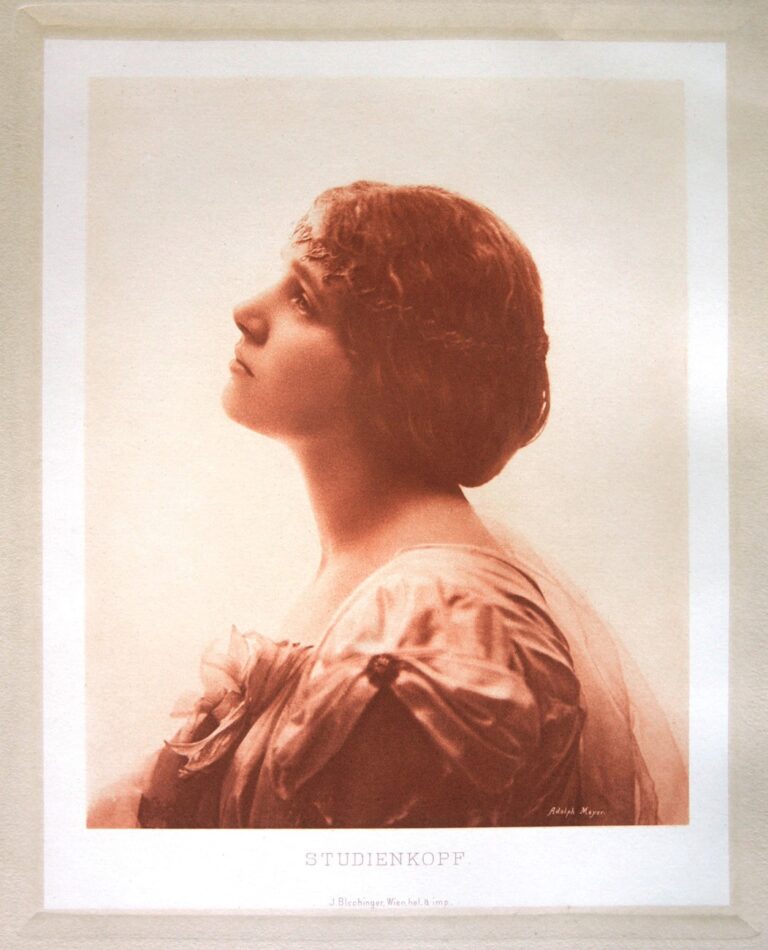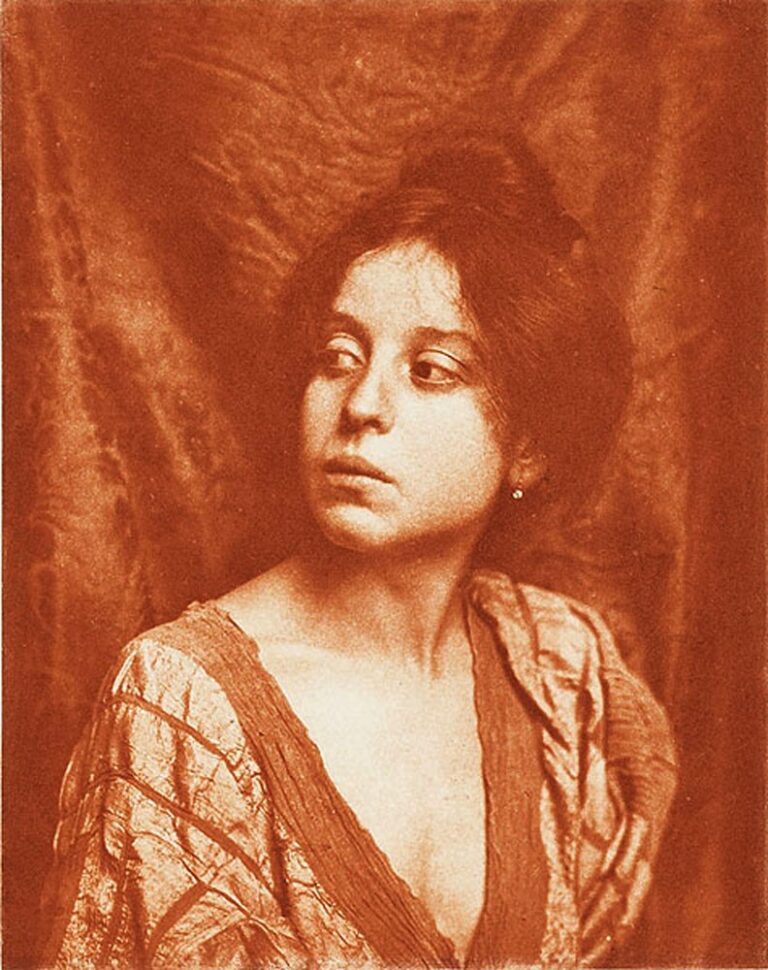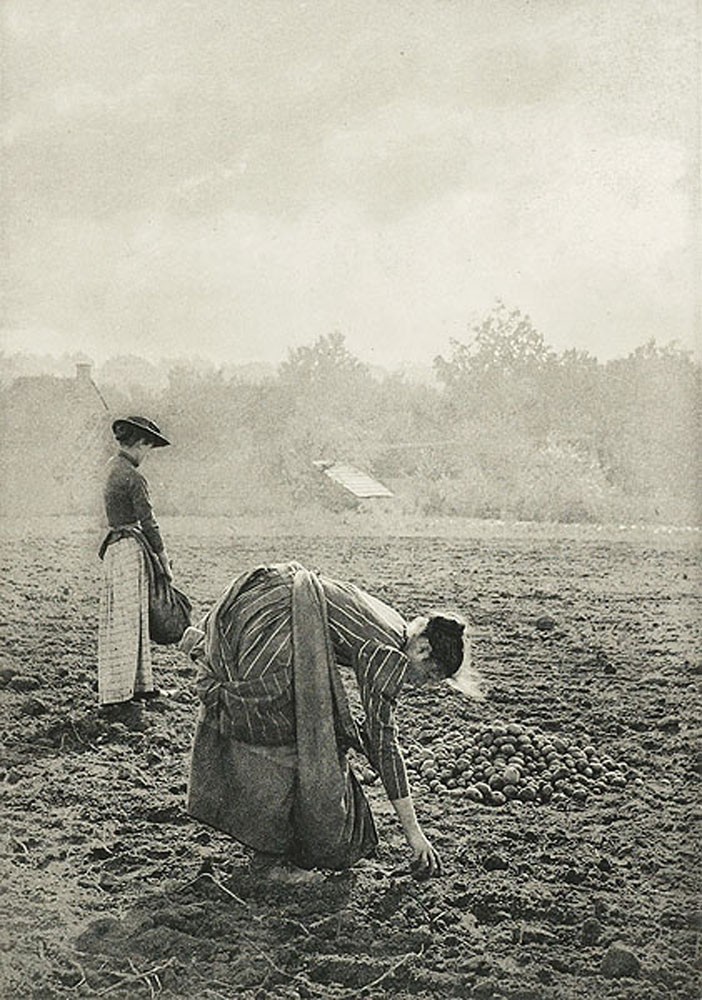
“At Lake Como”
This promotional sample of the Stieglitz photograph At Lake Como (1887) was made in 1895 on matt surface Velox photographic paper and inserted into the December, 1895 issue of The American Amateur Photographer. It was printed by the Nepera Chemical Company, founded in 1891 in Nepera Park, (Yonkers) New York by Belgian immigrant Leo Baekeland. (1863-1944) Velox, the first commercially successful photographic paper invented in 1893, was aptly named for the Latin word meaning swift or rapid, and was coated with gelatin silver chloride emulsion which allowed it to be developed with artificial light sources. Gaslight was an early illuminating source used to print it, and versions of the Velox brand after the Nepera Company was purchased by Eastman Kodak in 1899 advertised “Prints by Gaslight” on Velox packaging.
This print, with remnants of paper and adhesive at bottom margin where it had originally been bound as part of a bound volume, exhibits the following Nepera blindstamp, centered in the middle of the gutter of the right margin:
MADE ON VELOX PAPER,
NEPERA CHEM’L CO.M’F’RS.
printed within image at lower margin:
“At Lake Como”
Neg. by Alfred Stieglitz
The following editorial matter was included describing the process of producing the several thousand prints for the December issue:
RAPID PHOTOGRAPHIC PRINTING.
Somewhat in the line of the automatic photographic printing apparatus described in the September number of the American Amateur Photographer is the illustration in this number opposite page 565, from a negative by Mr. Alfred Stieglitz, entitled “On Lake Como,” a few thousand of which were required within a short time in order to appear with this number. These prints were made, we are informed, by the Nepera Chemical Co., Nepera Park, N. Y., on their improved matt surface Velox paper, and the exposures were made by a boy unskilled or unacquainted with photography, on the average of five seconds each about two feet from a Manhattan electric arc lamp, which is preferred on account of its steadiness and uniformity; and many other exposures were made to diffused north daylight at an average of five seconds each. It should also be stated that these thousands of exposures were made entirely from one negative, without injury to it, in an incredibly short time, as compared with the slow process of sun printing. Owing to the strange regulations of the Post Office Department, a print placed on a mount doubles the postage; hence it is necessary that the print be unmounted and the sensitized sheet the same size as the pages of the magazine.
We think the illustrations prove the process to be a remarkably simple one, and one which can be used to great advantage in the illustration of books, etc Most any tone can be obtained, according to the length of time the print is left in the developer. (1.)
1. The American Amateur Photographer: New York: December, 1895: p. 568



